An Overview of the Trans-Mississippi Stamps and Their Usage
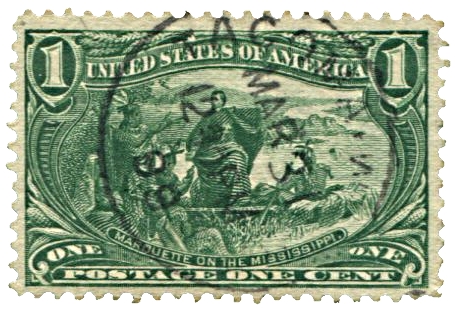
1¢ Dark Yellow Green
Circular datestamp cancel:
Tacoma, Washington.
The 1¢ stamp paid the domestic post card rate. Fourteen different plates were used to print the 70,993,400 stamps distributed to post offices.

2¢ Copper Red
Barred ellipse & CDS
duplex cancel.
The 2¢ stamp paid the domestic letter (1 oz.) rate. More 2¢ stamps were produced than any other stamp in the series. One hundred and twenty-one different plates were used to print the 159,720,800 stamps issued to post offices.
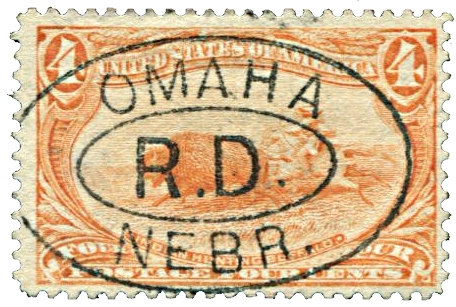
4¢ Orange
Double oval handstamp:
Omaha R.D.
4¢ paid the rate for a double weight letter mailed within the US. Three plates were used to print 4,924,500 of these stamps.
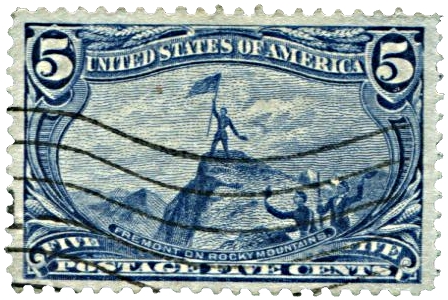
5¢ Dull Blue
Wavy lines machine
cancellation.
The 5¢ Trans-Mississippi stamp paid the international letter rate to any Universal Postal Union member country. Three plates were used to produce the 7,694,180 of these stamps that were distributed to US. postmasters.

8¢ Violet Brown
Double oval handstamp
cancel.
The 8¢ stamp was produced to pay the additional fee for registered mail. It would need to be used in addition with the appropriate postal rate stamp. Two plates were used to print 2,927,200 of these stamps.
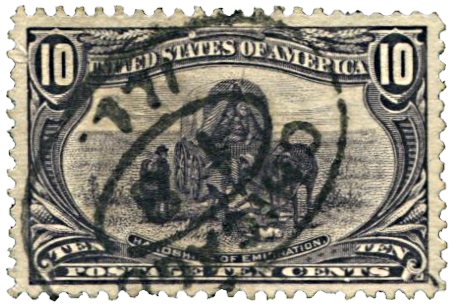
10¢ Gray Violet
Double oval handstamp:
Chicago, Illinois.
The 10¢ stamp could be used to pay the postage and registration for letters mailed domestically. It could also be used to pay a double weight international letter. Three plates were used to print 4,629,760 stamps of this value.
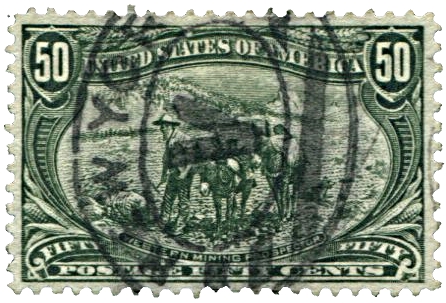
50¢ Sage Green
“V” registration handstamp:
New York
The 50¢ stamp, like the other high-value stamps, was used to mail overweight items and packages. Only one plate was produced and used to print the 530,400 stamps distributed to post offices.

$1 Black
Barred ellipse “P”
duplex cancel.
The $1 Trans-Mississippi stamp represented a high-value collector item. Adjusted for inflation, $1 in 1898 would amount to roughly $28.75 today. A legitimate postage use at the time could pay the rate for 50 ounces of mail. One plate was used to print only 56,900 stamps.
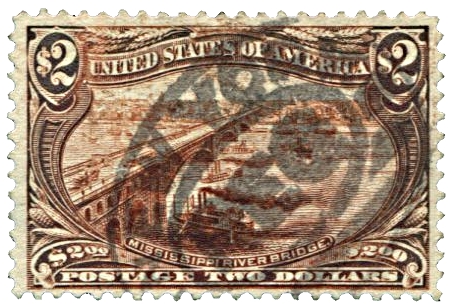
$2 Orange Brown
Double oval registration
Handstamp: New York.
The $2 stamp saw almost no use. Most covers including this high-value stamp that exist today are philatelic in nature, and even those are scarce. When adjusted for inflation, the $2 price for this stamp in 1898 would be equivalent to $57.45 in today’s currency. Only one plate was used to produce 56,200 stamps, and it is believed that less than half of those were actually sold to the public. The entirety of $2 stamps made were printed in one day: June 3, 1898.